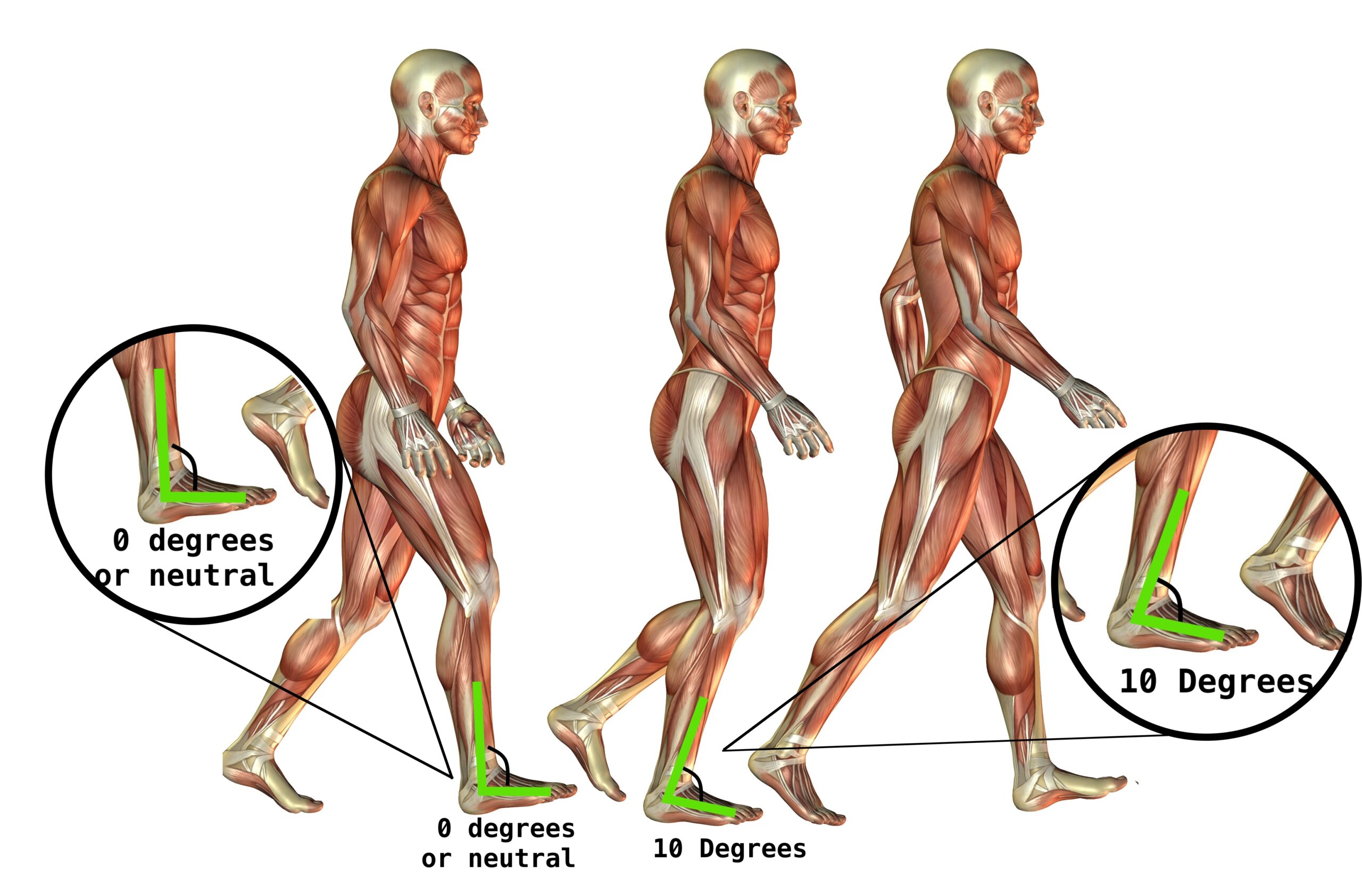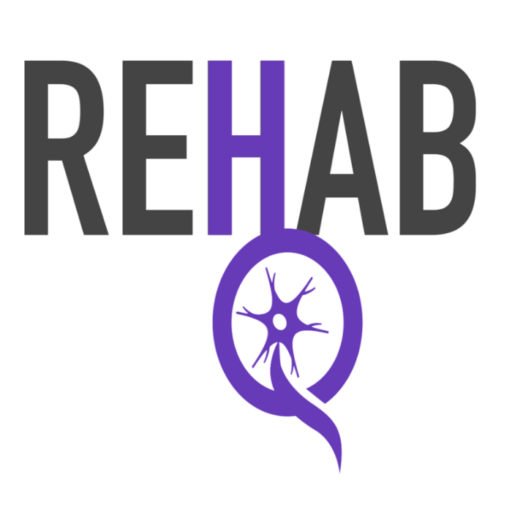Drop foot is when the muscles that lift the foot are not working properly. Hence, leading to the name, drop foot or foot drop. Needless, to say this can lead to difficulty walking.
When I think of someone who has drop foot, my number one concern is the risk of falling. A slight bump in the surface, or a miss-timed step, and you are down on the ground before you know it. Therefore, a critical component of a well-designed rehab plan is to find a way to lift the foot and prevent (what I call) toe catch.
Now, not all devices (that lift the foot) are created equal. Additionally, not every person with drop foot will require the same degree of support.
1. Foot drop straps
A foot drop strap, in general, provides mild assistance to lift the foot. I will say, the amount of “lifting” is very minimal. Most people I see with this strap will still have to lift the knee and hike up the hip to avoid scraping the toes on the ground. Therefore I would only recommend this for someone who has some movement in lifting the foot and has full strength in the knee and the hip
Pros – The piece that attaches to the shoe can be detached from the ankle strap. This makes it easier and faster to put shoes on and take shoes off.
Cons – The ankle strap has a little “give/stretch” so there is a little lag in how quickly it lifts the foot when walking. The other down side is that the velcro the secures the ankle strap wears down fairly quickly and that also adds a little “give/lag” in the efficiency of actually lifting the foot.
2. Posterior Leaf Splint
A posterior leaf splint (PLS) is a low profile brace that goes inside the shoe. A PLS is a step up from a foot drop strap in the amount of stability it provides.
Pros
- Provides more stability compared to a foot drop strap
- It is light-weight
- It is low profile
- It is somewhat flexible and therefore allow for a more normal stepping pattern
Cons
- It does not provide any side to side support and therefore someone is still at risk for “rolling” the ankle
- It is flexible and therefore is not good for someone who has severe leg weakness
3. Ossur Carbon Dynamic foot drop brace
This dynamic AFO provides much more support and is really one of the best on the market. Now, that being said, it is also the most expensive so I recommend using an orthotist and going through your insurance for this if you have insurance. What I love about this brace is that it is light weight and sturdy. This is because of the carbon material that it is made out of. It also offers support on the front of the shin bone so if you are someone who also has mild knee weakness or you also have weakness in the muscles on the back of the lower leg, this will help provide added stability.
4. Swedish AFO
A swedish AFO is made out of plastic and allows for some motion at the ankle. This can be a good thing to “normal” the walking pattern. However, because it allow for this motion, if you have severe weakness, this brace will not adequately lift the foot. It is much cheaper than the Carbon dynamic foot drop brace and therefor if you wanted to “trial” a brace and not necessarily go through the process of going through insurance, I would recommend starting with this brace.
Pros
- Lightweight
- Low profile
- Flexible
- Full foot plate
Cons
- Does not provide support on the sides of the ankle
- Flexible and therefore not appropriate for someone with moderate knee and hip weakness
5. Turbomed Xtern
If you are a very active person, this is the brace I recommend. This brace goes on the outside of the shoe which makes it a little more comfortable.
It is an active assistive type of brace so it does allow for some normal ankle movement and therefore, a more normal stepping pattern.
The thing that I really like is how rigid the bars are that run down the sides of the shoe. When I work with patients who have this brace, these bars offer some side to side stability. This can be helpful for anyone has a tendency to walk on the outside of the foot (supination).
How do you choose?
Choosing the appropriate level of support for your specific needs is critical. Too much support and you might unintentionally alter your gait in a manner that can create additional problems. On the other hand, not enough support, places you at risk for developing compensatory strategies. Also placing you at risk for creating additional problems. Not to mention, an unintentional, intimate run-in with the ground. And in most cases further injury. ?
So, how do you know what type of device (to lift the foot) is best for you?
Is the ankle suffering from flaccid muscle tone or spasticity?
None of the devices in this post are appropriate for someone who has spasticity. These devices will not prevent the foot from rolling to the side and/or will they be strong enough to prevent the foot form pointing due to spasticity.
Do I have any active movement in the muscles that lift the foot?
The best way to test this is to sit on a high surface where your leg is no touching the ground and try and lift the foot. If it lifts to about parallel to the ground I would say you have some “active movement”. In this case, you might want to try an active assistive type of brace (which I will go into below).
Do I have adequate passive range of motion in the ankle?
Passive range of motion is the degree to which the ankle moves. This is tested by either a therapist or a piece of equipment moving the ankle. Normal passive range of motion is 10 degrees of dorsiflexion. This is the amount of motion that is required in the ankle to perform a normal gait pattern.

In most cases, if you do not have adequate ankle dorsiflexion range of motion, a more rigid brace might be required and most likely a foot drop strap will not provide adequate support. The Ossur Carbon dynamic foot brace might be the best option.


